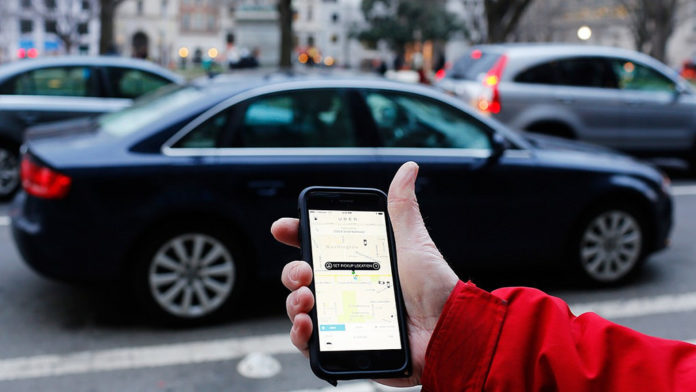For better or worse, companies like Uber, Lyft, Waymo among many other global players are changing the way people interact with cars. The disruptive innovations, exponential growth, and constant controversy have made these revolutionary startups some of the most influential companies in the entire automotive industry.
If you are someone who is shaking your head at that last line, you may have missed the massive rebranding effort car companies on every continent have been rolling out over the last couple of years in efforts to transform from automobile manufacturers into mobility service providers.
For a brief snapshot of this phenomenon, consider the following acquisitions and partnerships as compiled by the Center for Automotive Research: Daimler owns car2go and moovel, General Motors has Maven, and BMW has ReachNow. Toyota invested in Uber, Getaround, and Grab; Ford acquired Chariot and TransLoc. General Motors has partnership agreements with Uber and Lyft, Ford with Lyft, and Nissan with Scoot.
View this post on InstagramA post shared by BMW (@bmw) on
For companies increasingly formerly known as automobile manufacturers, investments in the emergent car-to-go, mobility services market are borne out of that fundamental survival instinct: self-preservation.
The truth is, it seems increasingly likely that while car sharing, ride hailing, ride sharing, bike sharing, micro-transit and mobility as a service innovations, services and profits are expected to rise, this will come at the expense of the private ownership of cars which has been so central to growth and business development of car companies around the world.
As of January 7th, 2019, the likelihood that the ride-hailing service Uber could fetch an IPO (initial public offering) price of nearly $90 billion seems increasingly likely. To put that number in perspective, bear in mind that the most profitable car company in the world, Toyota, is only worth $29.99 billion.
Mercedes-Benz and BMW are each only worth about $25 billion. The 4th most profitable car company, Ford Motor Company is worth about $12 billion. Finally, the 10th most profitable company, Volkswagen is only worth about $6 billion.
As you may now be able to see, Uber’s massive growth is TRULY disruptive and is forcing automobile manufacturers to reconsider their business models or suffer the grim consequences.
Keep reading to learn more about the companies who alongside Uber are transforming the automobile industry in ways never imagined before.

The Birth of the Car to Go Trend
In 2008 friends Travis Kalanick and Garrett Camp were in Paris, France to attend LeWeb, a tech conference known as an incubator for innovative ideas that change the world. Each had recently received 8 figure payouts for selling the startups they had founded.
The story goes that the concept for Uber came together when the duo were unable to hail a cab on a frozen and blustery night in the French capital. The original plan was to create a time sharing limo service which could be ordered via an app.
After the conference ended, each went on their ways but stayed in touch to discuss the idea they had hatched that one fateful night.
By 2009, Camp had officially founded his company He brought on Kalanick as “Chief Incubator” and the service officially launched in San Francisco by May of 2010.
Right out of the gate, the company began to attract attention. It had seized on a trend which has been a kingmaker for many technology companies in recent years: solve a problem or simplify a problem by creating an easy to use online application.
It was absolutely a matter of perfect timing.
Right in the beginning of the mobile smartphone and tablet revolution, Uber was there to provide its early urban clients with a simple and easy way to order cars to come pick them up based on the GPS data of their phones through an interface very similar to the messaging applications like WhatsApp or Facebook Messenger that they were already using.
By 2011, Uber had received an initial investment of $1.25 million before securing a cool $11 million in Series A fundraising. This money allowed the company to expand its business model to New York, Seattle, Boston, Chicago, Washington D.C. and across the pond to Paris.
The company would close out the year by pulling in another $37 million in fundraising from Menlo Ventures, Jeff Bezos and Goldman Sachs. By 2012, they would launch their UberX concept which offered hybrid car options as an alternative to traditional, upscale black car services.
As 2016 came to a close, Uber had raised an additional $3.5 billion from Saudi Arabia’s Wealth Fund and had continued its path of expansion into new markets making its presence known on all continents and in most major cities around the world.
The Backlash Begins
From nearly the beginning of its international expansion efforts, Uber faced fierce criticism from taxi companies, government regulators and a variety of automobile industry insiders who could sense the looming competition as a threat.
Famously in 2014, taxi drivers in London, Berlin, Paris and Madrid, staged large scale protests against Uber and its disruptive business model. The claimed that Uber avoids licensing fees and bypasses local regulations to create a business model that is manipulative and unfair.
The sentiment was echoed around the world and would lead to some brief stalls in the company’s growth in key markets such as London and New York. In the latter city, news emerged that the company was avoiding paying a key tax at the expense of its drivers who were reported to be earning about $20 an hour on average in Manhattan.
By 2017, a New York court found that Uber drivers under the law should be considered employees as opposed to independent contractors as they had originally been classified as.
One of the key innovations Uber developed involved a pricing mechanism for its service which is based on an automated algorithm. Prices rise according to supply and demand. On New Years Eve in 2011, the companies prices across the United States soared as much as 7 times their standard rates fueling negative feedback from customers.
The surge pricing model would come under fire again when Uber’s prices soared to exorbitant rates in the wake of natural disasters such as floods and blizzards across the United States.
The Car to Go Movement Accelerates
Uber drivers are a collection of professional and non-professionals who have passed driving record and background checks to ensure customer safety.
The company has rigorously sought to increase service delivery by ensuring that all its drivers use vehicles meeting the minimum standards as defined by their geographical location.
Uber offers a variety of service classes which vary by geographical location:
-
uberX is the basic sedan service for everyday rides for up to 4 people.
-
uberXL provides affordable SUV service for groups up to 6 people.
-
uberSUV provides luxury SUV service for groups up to 6 people.
-
uberPOOL allows customers with different starting and ending points who are traveling in the same direction to share rides in sedans and share the cost.
-
uberBLACK provides rides with professional drivers in black town cars for up to 4 people.
-
uberWAV provides rides in wheelchair- and scooter-accessible vehicles by drivers trained in assisting passengers.
-
uberSELECT provides stylish, high-end cars with top-rated drivers for up to 4 people for special occasions.
-
uber TAXI lets you hail a yellow cab from the Uber app.
-
uberEATS offers a merchant delivery program for food which allows customers to order from their favorite restaurants.
Uber launched uberEats in 2014 to compete against services such as GrubHub and Foodora which in their own ways were very disruptive to existing delivery options in major markets across the United States and around the world.
Uber gained a major partnership when McDonald’s announced in December of 2016 that it would venture into delivery with UberEats. In December of 2017, the company announced the service was now profitable in 40 out of 165 cities in which it operates. As of November of 2018, UberEats was available in close to 400 cities worldwide.
This year, the company in partnership with Barclays has rolled out a co-branded rewards credit card in the U.S. The Uber Visa Card reportedly will be free and come with a $100 starting bonus. It would also offer cash back on spending including dining, airfares and certain online transactions.

Lyft enters the Scene
The company known as Lyft was originally known as ZimRide when it was founded in 2007, before Uber was even a twinkle in its founders eyes. Originally ZimRide was designed to provide a longer distance ride sharing service that would connect college campuses and allow students to visit friends.
Lyft as it is presently known was founded in 2012. From the beginning, Lyft became the only major competitor to Uber and while its growth has not been as significant, it is important to note that by the middle of 2018, it was valued at over $15 billion.
Lyft, like its San Francisco competitor Uber, also has minimum vehicle requirements for its drivers and a service largely driven by a smart phone based app interface. Cars are required to be a model year 2005 or newer and must have four doors, no body damage, fully functional air conditioning among other key requirements.
Also like Uber, Lyft offers a variety of different service classes which can vary by geographical location.
A breakdown of Lyft services are as follows:
-
Original Lyft provides rides in regular vehicles for up to 4 passengers.
-
Lyft XL provides rides in regular vehicles for up to 6 passengers.
-
Lyft Premier provides rides in high-end vehicles for 4 passengers.
-
Lyft Lux provides premium black car service in luxury vehicles.
-
Lyft Black is a premium black car service including luxury vehicles.
-
Lyft Black XL provides rides in premium black SUV service for up to 6 people.
Lyft cars were originally known for featuring furry pink mustaches on the front of their vehicles. Known as “car stashes” they were viewed with equal amounts of intrigue and disgust. Ultimately the company would do away with this branding element in effort to compete with the more professional look of Uber’s higher end services.
To compensate, Lyft began to experiment with what has been called the Amp. A glowing light which sits on its driver’s dashboard, the Amp is used to help Lyft’s customers locate their drivers by knowing what color to look for.
Lyft also has a food delivery service, although it’s a bit more colorful. Lyft has a major partner of their own: the fast-food chain Taco Bell. In July of 2017, the companies tested out a new feature called “Taco Mode” which allows a user currently on a trip in a Lyft car to press a button on their app and direct the driver to the nearest Taco Bell.
As of late 2018, Lyft commands a about 30% of the United States car to go market. While Uber is a clear leader at present, questions remain about how innovations such as the release of fully autonomous vehicles could do to shake things up even further.
The Final Frontier: Autonomous Car to Go Services
As a key element of the future of the automotive industry, it is not surprising that the key players in the car to go revolution view autonomous vehicles as the ultimate goal. Apple, Tesla Motors, Google, and Daimler are just a few of the companies at the very fertile intersection between the automotive and technology industries that car to go behemoths such as Uber and Lyft find themselves straddling.
Uber has suffered some major problems with bringing its own self-driving car program to fruition. The company was sued by Google’s parent company Alphabet Inc. for reportedly conducting corporate espionage to steal self-driving technologies.
The troubles were compounded when news broke that an Uber self-driving test vehicle fatally struck a pedestrian leading the company to suspend all of its testing in March of 2018. By July. the company had resumed a new pilot program in Pittsburgh, Pennsylvania though many automotive industry analysts predict Uber might not be able to respond to market changes quick enough to be able to capitalize on the self driving revolution.
Waymo enters the Race
In late December of 2018, news broke around the world that Waymo, the Alphabet Inc. owned company had released the world’s first self-driving car service. Limited in scope to a small regional hub of cities based around Phoenix, Arizona and including Tempe, Mesa, and Chandler, the milestone remains significant.
Waymo One continues to offer riders around Phoenix the opportunity to ride 24 hours a day in cars piloted by automated processes alone, without the need for human drivers at all. Many in the car to go industry have viewed this as a “holy grail” of sorts as the main source of expenses faced by companies like Uber and Lyft comes from having to pay its human workforce.
Waymo has only rolled out its service to select number of passengers who have already participated in the company’s pilot programs which began in Arizona in April of 2017.
Fortunately for Waymo and its passengers those pilots were a success and the autonomous driving revolution may soon be a reality of daily life in cities around the world.
“Self-driving technology is new to many, so we’re proceeding carefully with the comfort and convenience of our riders in mind,” said Waymo CEO John Krafcik.
Waymo has remained dedicated to taking a safety first approach. This is evidenced by the company’s continued use of human drivers behind the steering wheel of its automated rides.
While the cars are being operated solely by automated means, the human drivers serve as a failsafe to help ensure the safety of passengers and the general public.
The Future is Here
Just several decades ago, the self driving car-to-go renaissance would have read more like science fiction than fact-based reality. And yet, in 2019, here we are, standing on the precipice of a brave new world which promises the way we look at cars in future may not reflect the way we connected with them in the past.
For some, mobility services mean a benefit which allows the opportunity to forgo car ownership in favor of a business model which offers the convenience of using a car without the need to invest in one directly.
For others, the autonomous revolution could signal restrictions in freedom which make it less viable to imagine taking to the open roads for the kind of white knuckle driving they love.
The question, however remains: will the future of cars offer humanity a new and tangentially improved experience or something which leaves us longing for the past?
While it may never be possible to know for certain what the future will bring, for those of us watching the automotive industry and attempting to read the shifting trends guiding it at the present day, it seems the future is here.
Source: CNBC, Investopedia, Business Insider

